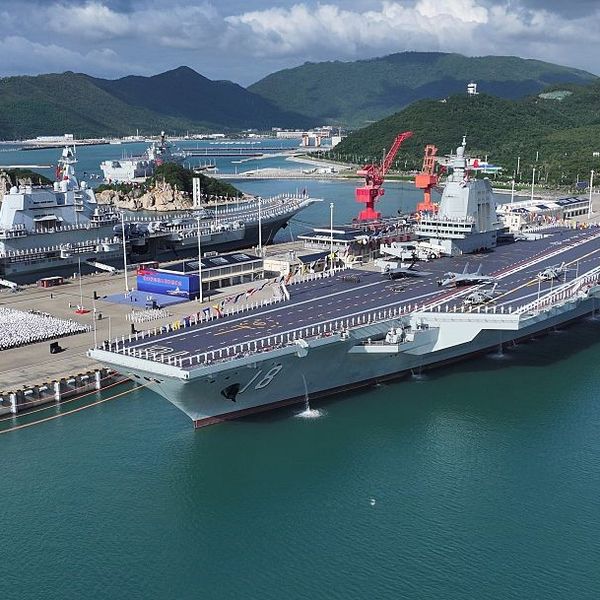Bottom Line Up Front
- The relationship between the United States and China continues to deteriorate as fallout from the coronavirus (COVID-19) fundamentally alters geopolitics, economics, and society writ large.
- Chinese diplomats have been spreading conspiracy theories, false rumors, and deliberate disinformation that the United States was somehow responsible for the initial spread of the virus.
- China’s propaganda machine has been working tirelessly to gain control of the narrative, deflecting any blame for the virus while attempting to portray the country as heroic in its quest to assist other struggling nations.
- China is attempting to frame its response to COVID-19 as a triumph for its authoritarian model of governance, in contrast to Western democracies’ failures to stem the spread of the virus.
The relationship between the United States and China continues to deteriorate as fallout from the spread of the global pandemic known as the coronavirus (COVID-19) fundamentally alters geopolitics, economics, and society writ large. On Tuesday, the Chinese government announced that it would move to expel all American journalists working for The New York Times, The Washington Post, and The Wall Street Journal. Journalists were ordered to notify China’s Department of Information of the Ministry of Foreign Affairs and return their press credentials to the government. The expulsion of American journalists from China is not only myopic, it is dangerous. A lack of transparency surrounding issues related to the coronavirus will make the situation worse in China, and accordingly, throughout East Asia and beyond. For months, the Chinese Communist Party (CCP) attempted to downplay the severity of COVID-19 and suppress any negative information about the spread of the virus and its lethality.
Officials in the Trump administration, including President Donald Trump and U.S. Secretary of State Mike Pompeo have taken to calling the coronavirus the ‘Chinese virus’ and the ‘Wuhan virus,’ respectively. Global health officials have pleaded with world leaders to refrain from associating the disease with a particular nation or ethnic group, driven in part by fears of a sharp rise in hate crimes around the world against Asians. Meanwhile, Chinese diplomats have been spreading conspiracy theories, false rumors, and deliberate disinformation that the United States was somehow responsible for the initial spread of the virus. One of the initial disinformation campaigns used by the CCP was that of ‘deflection.’ Namely, state-owned outlets like CCTV was disseminating a narrative to minimize the threat of the coronavirus by comparing it to the much deadlier ‘American flu.’ This campaign spread quickly on social media, with hashtags like FluBreaksOutinUSA [美国爆发乙型流感#] trending on Chinese social media platform Weibo after January 9. By January 27, the hashtag had over 471 million views. The posts included screengrabs from the U.S. Center for Disease Control (CDC) webpage with Chinese translations explaining the map and numbers accompanied by statements such as ‘this is the most lethal flu in the past 40 years.’ Also, Chinese Foreign Ministry Spokesman Zhao Lijian took to Twitter to inform his more than 300,000 followers that ‘it might be the U.S. Army who brought the epidemic to Wuhan,’ followed by demands that Washington provide Beijing with an explanation.
China’s propaganda machine has been working tirelessly to gain control of the narrative, deflecting any blame for the virus while attempting to portray the country as beneficent and heroic in its quest to assist other struggling nations, including Italy. A recent fake video was circulated by a PRC spokesperson that seemed to show Italian citizens clapping along to the Chinese national anthem while offering thanks for China’s contributions and aid to fight the coronavirus in Italy. Domestically, China’s so-called ‘internet police’ have stepped up censorship operations and authorities have detained citizens for criticizing the CCP’s response to the coronavirus. Chinese billionaire Ren Zhiqiang has been reported as missing after he wrote an article blaming the government of Chinese leader Xi Jinping for originally covering up the virus, as well as for its attempts to promote its alleged success in how the CCP has responded.
The worsening of relations between the United States and China comes on the heels of a long and bitter trade dispute which served to inflame populist and nationalist tendencies in both countries. China is attempting to frame its response to COVID-19 as a triumph for its authoritarian model of governance, in contrast to Western democracies and many countries’ failures to stem the spread of the virus, including the United States. Chinese state media has relentlessly juxtaposed China’s response to that in the United States, with The People’s Daily, a Chinese Communist Party controlled media outlet, remarking, ‘China can pull together the imagination and courage needed to handle the virus, while the US struggles.’ Even though it was the authoritarian nature of China’s government that contributed to the initial spread of the virus, as information was suppressed and an internal lack of transparency took root, the CCP is now attempting to frame its heavy hand as the solution. This occurs even as democracies like Taiwan and South Korea have effectively tackled the spread of COVID-19 in those countries. The more the United States continues to flounder with its response, the more fodder it offers to Beijing, as the world’s two most powerful countries battle to control the narrative while simultaneously working to mitigate the disastrous consequences of the coronavirus.








